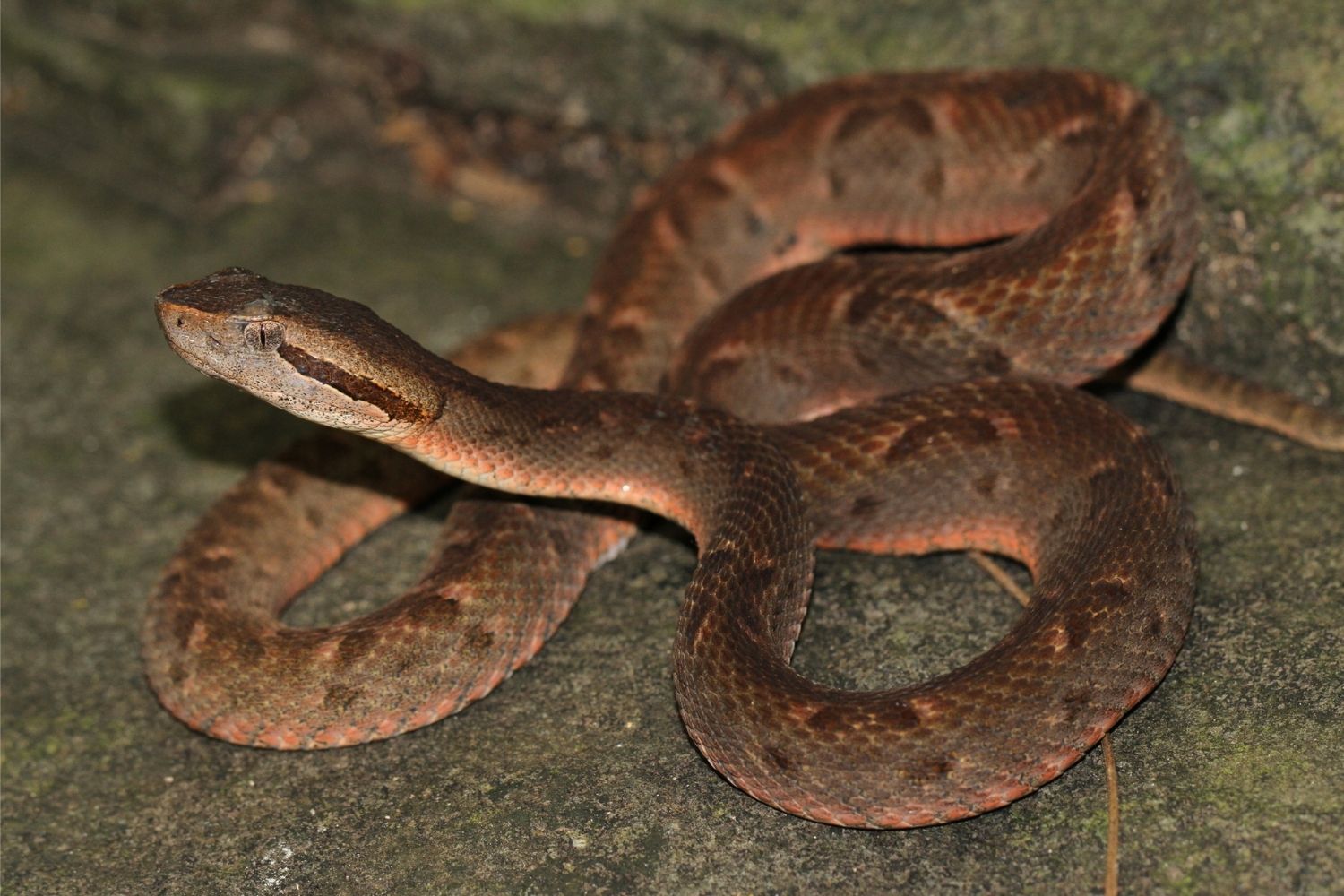
Ever wondered about the Martinique Lancehead Viper? This fascinating snake, native to the Caribbean island of Martinique, holds many secrets. Known for its potent venom, the Martinique Lancehead Viper can be both intriguing and dangerous. But what exactly makes this snake so unique? From its venom composition to its hunting techniques, there's a lot to uncover. Whether you're a snake enthusiast or just curious about wildlife, these 25 facts will give you a deeper understanding of this remarkable reptile. Ready to dive in? Let's explore the world of the Martinique Lancehead Viper and learn what sets it apart from other snakes.
Key Takeaways:
- The Martinique Lancehead Viper, found only in Martinique, has venom that causes intense pain, swelling, and bleeding. Quick medical treatment with specific antivenom is crucial for survival.
- The viper's venom contains toxins that can lead to tissue necrosis, organ damage, and chronic pain. Prompt first aid, hospital care, and supportive treatment are essential for recovery.
Envenomization by the Martinique Lancehead Viper
The Martinique Lancehead Viper, also known as Bothrops lanceolatus, is a venomous snake native to the Caribbean island of Martinique. Its bite can cause severe envenomization, leading to various medical complications. Here are some intriguing facts about this snake and the effects of its venom.
The Snake Itself
Understanding the Martinique Lancehead Viper helps grasp the severity of its bite.
- Native Habitat: This viper is found exclusively on the island of Martinique in the Caribbean.
- Appearance: It has a distinctive triangular head and can grow up to 2 meters in length.
- Behavior: Generally nocturnal, it prefers to hunt at night.
- Diet: Feeds on small mammals, birds, and amphibians.
- Conservation Status: Classified as vulnerable due to habitat loss and human activities.
Venom Composition
The venom of the Martinique Lancehead Viper is a complex mixture of toxins.
- Hemotoxins: These toxins target blood cells and blood vessels, causing internal bleeding.
- Neurotoxins: Affect the nervous system, potentially leading to paralysis.
- Enzymes: Various enzymes in the venom break down tissues and proteins.
- Coagulants: Some components cause blood to clot, while others prevent clotting, leading to unpredictable bleeding.
- Cytotoxins: These toxins destroy cells, causing tissue damage and necrosis.
Immediate Effects of a Bite
A bite from this viper can have immediate and severe consequences.
- Pain: Intense pain at the bite site is one of the first symptoms.
- Swelling: Rapid swelling can occur, spreading from the bite site.
- Bruising: Bruising and discoloration of the skin are common.
- Bleeding: Both internal and external bleeding can happen due to hemotoxins.
- Shock: Severe bites can lead to shock, a life-threatening condition.
Long-Term Effects
Surviving the initial bite doesn't mean the end of complications.
- Tissue Necrosis: Dead tissue around the bite site may require surgical removal.
- Infection: Secondary infections are a risk due to tissue damage.
- Organ Damage: Vital organs like kidneys and liver can be affected by the venom.
- Chronic Pain: Some victims experience long-term pain and discomfort.
- Mobility Issues: Severe bites can lead to permanent disability or loss of limb function.
Treatment and Antivenom
Prompt medical treatment is crucial for survival and recovery.
- First Aid: Immobilizing the affected limb and keeping the victim calm can slow venom spread.
- Hospital Care: Immediate transport to a medical facility is essential.
- Antivenom: Specific antivenom for Bothrops lanceolatus is the primary treatment.
- Supportive Care: Pain management, wound care, and monitoring for complications are necessary.
- Rehabilitation: Physical therapy may be required for recovery from severe bites.
Final Bite of Knowledge
Understanding envenomization by the Martinique Lancehead Viper can save lives. These snakes, native to Martinique, possess potent venom that can cause severe reactions. Knowing the symptoms, like swelling, pain, and nausea, is crucial. Immediate medical attention is vital to counteract the venom's effects.
Prevention is key. Avoiding snake habitats, wearing protective clothing, and being cautious in snake-prone areas can reduce the risk of bites. If bitten, staying calm and seeking prompt medical help can make a significant difference.
Remember, these snakes play a role in the ecosystem by controlling rodent populations. Respecting their space and understanding their behavior helps coexistence.
Stay informed, stay safe, and appreciate the Martinique Lancehead Viper from a distance. Knowledge is your best defense against these fascinating yet dangerous creatures.
Frequently Asked Questions
Was this page helpful?
Our commitment to delivering trustworthy and engaging content is at the heart of what we do. Each fact on our site is contributed by real users like you, bringing a wealth of diverse insights and information. To ensure the highest standards of accuracy and reliability, our dedicated editors meticulously review each submission. This process guarantees that the facts we share are not only fascinating but also credible. Trust in our commitment to quality and authenticity as you explore and learn with us.
